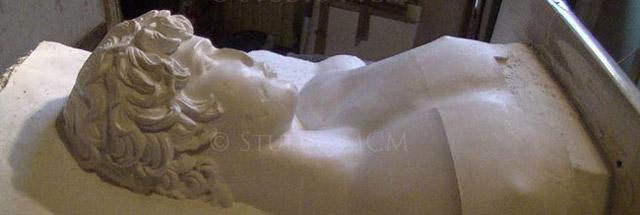For objects of limited size or with details that are difficult to capture we use a short-range high resolution scanner. Eva 3D scanner have up to 0.5 mm in resolution and up to 0.1 mm in accuracy and a data acquisition speed up to 2 million points. Allowing us to record even the tiniest surface discontinuities, producing a three-dimensional mesh model which is perfectly coherent with the original subject. This technology is also capable of acquiring data without coming into contact with the work and provides the metrical control needed to record the individual parts of the model, with the potential for viewing the data in real time during the acquisition phase and the advantage of carrying out the necessary checks.
Post-processing

Printing the model using a 3D printer requires further optimization of the virtual model, to ensure the optimal calibration of the thicknesses and angles of the parts which will make up the object. This operation is needed to start the printing processes and, equally importantly, to plan the time-frame and limit prototyping costs. For the reproduction of large objects we also design any internal supports needed to ensure the stability of the final product.
Prototyping using a 3D scanner involves the superimposition of synthetic powder (plaster powder mixed with glue for bonding). Specifically, we use a 3D ZPrint 350 printer with a maximum definition of 0.1mm.The physical model thus created has a homogeneous white colour with high definition and good mechanical resistance. For us, manual work to finish the model is vital, both in the digital phase – as we have seen – and in the real phase; this ensures a final product which is wholly superior to that obtained by purely automatic means. Suffice it to consider the surface finishing process which, as it must replicate the real materials, requires targeted intervention to reproduce the original variations in colour and material. Additionally, we can make an inverse atrix print from the same file to create a protective support (usually in high density polystyrene) for transportation and/or storage of the prototype or even of the originals themselves. The same procedure also makes it possible to reproduce the whole work or its parts at different scales.


 Prototypes
Prototypes


